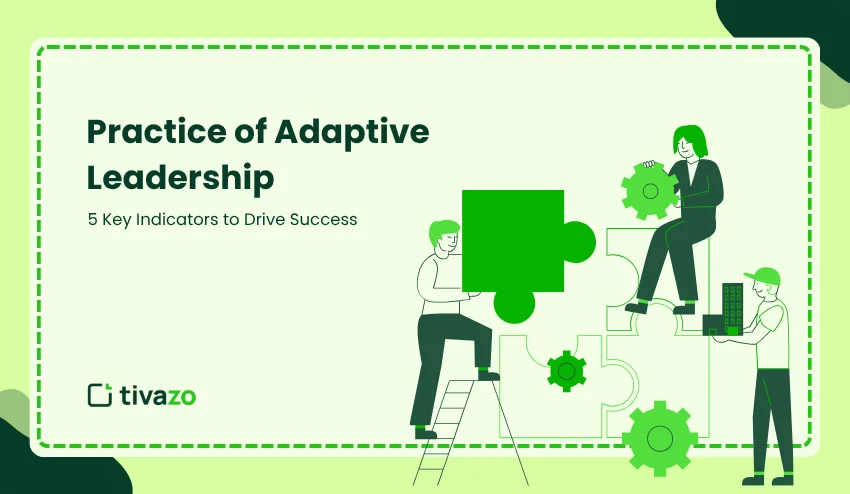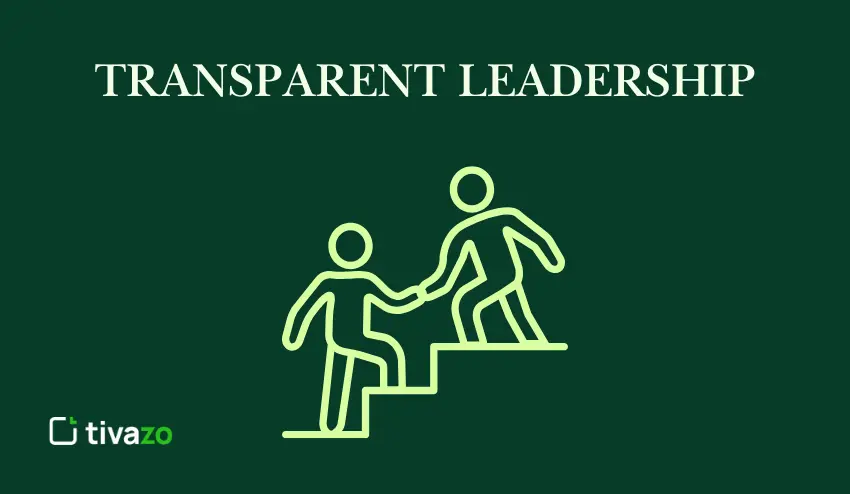In today’s fast-moving business environment, classical leadership styles are no longer enough. Complexities and challenges require leaders to be agile, adaptive, and future-focused. Adaptive leadership has gone from being ‘an option’ to being ‘a necessity’ that will be needed in 2026 and beyond. In this blog, we will share 5 indicators of what the adaptive leaders of tomorrow will look like as well as some practical suggestions you can use right now.
Are you ready to lead with foresight, flexibility, and resilience? Let’s get into it.
Key Highlights:
- What is the Practice of Adaptive Leadership
- Key Indicators of the Practice of Adaptive Leadership
- The Role of Emotional Intelligence
- Building a Culture of Adaptability in Your Organization
- How The Practice of Adaptive Leadership Drives Success
- The Future of Adaptive Leadership
What is the Practice of Adaptive Leadership?
The Practice of Adaptive Leadership is the practice of steering change, uncertainty, and complexity by stimulating innovation, agility, and relentless learning. Developed by Ronald Heifetz and Marty Linsky at Harvard, adaptive leadership emphasizes developing organizations that can flourish in the face of challenges rather than simply surviving.
While classical leadership is highly reliant upon authority and stability, leading adaptively will require leaders to:
- Welcome uncertainty as a springboard for growth.
- Learn through failure and iterating quickly.
- Revisit and update strategies continually to remain relevant in an ever-changing environment.
The practice of Adaptive leadership is also a practice based on trust, emotional intelligence, and collaboration – essential ingredients in leading through the discontinuities of the future.
The Key Indicators of the Practice of Adaptive Leadership in 2026
The way we approach leadership in 2026 will increasingly depend on adaptive leadership. This is because leaders will need to not only cope with the ongoing pace of change, but to change course, to be resilient and to be forward-looking, anticipating and acting on emerging and future trends. I suggest that in 2026, there will be 5 key indicators of the Practice of Adaptive Leadership.
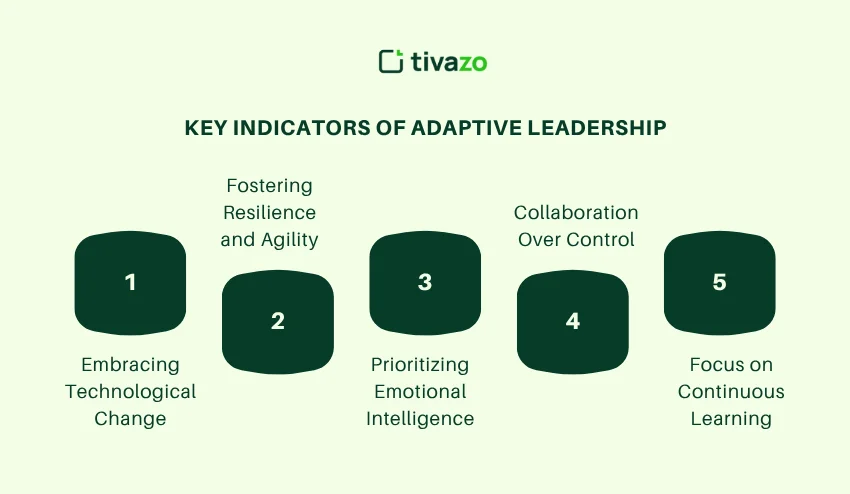
H3: Indicator 1: Embracing Technological Change
The rapid transformation of the business landscape is unprecedented, propelled by technology. By 2026, the value of AI and automation, and decisions based on data, will all be elemental to efficiency and competitiveness. Leaders will need to stay ahead in the introduction of technology in their work, including manufacturing, operations and customer engagement, and invoke innovative change.
- Lead the change in technology by adopting and adopting emerging technologies.
- Empower the team to utilize AI to enhance operations by working smarter, not harder.
- Stay flexible to tech-driven disruption and update speed frequently to direction, while utilizing an iterative approach in future actions to be adaptive.
H3: Indicator 2: Fostering Resilience and Agility
We observed continued disruption from the pandemic, climate change, and political upheaval. In 2026, organizations will need to be built for uncertainty, and sources of resilience and agility will need be built into the team made or constructed. Leaders will now be responsible for ensuring that teams are unconventional in how they craft their strategy and empower the teams; this is a very difficult reframing of strategy in 2026, faced with unprecedented and courageous leadership.
- Cultivate resilience by planning for the unplanned – ensure that you have contingency plans to operate flexible systems/processes.
- Encourage not only being agile with teams but also thinking in an agile manner to pivot quickly when required.
- Recognize changes through the lens of growth – perhaps look at potential changes as opportunities for growth as opposed to problems.
H3: Indicator 3: Prioritizing Emotional Intelligence
In 2026, emotional intelligence (EQ) will be a necessary competence for any leader in this hybrid and remote world. The ability to understand one’s own and others ‘ emotions will be relevant to if a leader can create trust, collaborate, and create high performing teams.
- Regulate their own emotions and remain calm in difficult, and/or stressful events.
- Exhibit empathy for the team members to foster trust and collaboration.
- Generate relational trust through listening and communicating.
H3: Indicator 4: Collaboration Over Control
Old and stale models of leadership (top-down and control-based) won’t exist in 2026. The winner(s) will be leaders who value service above self. Leaders will (and must) empower teams to make decisions and add collective brainstorming and problem solving. These simple yet profound shifts will engage and foster a more creative and innovative workforce.
- Engaging in decentralized decision-making and trusting staff to take ownership.
- Encouraging diverse perspectives and inputs to invigorate innovation.
- Building cross-functional teams who work together to address complex problems
H3: Indicator 5: A Focus on Continuous Learning and Development
In a changing context, continuous learning is more than a luxury, it is the most required strategy. Adaptive leaders in 2026 will invest in their own and their teams development. A culture of continuous learning and experimentation will be critical to thriving in this shifting context.
- Self-development, periodic reskilling and keeping ahead of industry trends.
- Team development, creating learning and development opportunities for your employees.
- Creating a culture of experimentation in which you expect and accept that failure is part of the learning process.
H2: The Role of Emotional Intelligence in The Practice of Adaptive Leadership
Emotional intelligence (EQ) is essential to The practice of adaptive leadership. With remote work, virtual teams and cross-cultural coordination, adaptive leaders with high EQ have a better chance of learning to manage complexity and navigate dynamic contexts. Fostering EQ as a leader means understanding and impacting your team’s emotional landscape and being better at communicating, relating to each other, and solving problems.
As we near the year 2026, the importance of leaders with high emotional intelligence will be crucial for bringing together cohesive, resilient teams. Here’s why emotional intelligence will be important for adaptive leadership capabilities:
- Fostering strong and trusting relationships, even when working remotely.
- Managing emotionally charged situations with empathy and understanding.
- Nurturing their team members and showing support on an emotional level during ambiguous or stressful times.
Emotional intelligence is an unseen driver of resilient, high-performing teams; it is also a key differentiator that separates exceptional leaders from ordinary leaders.
H2: Navigating Crisis and Uncertainty with The Practice of Adaptive Leadership
The practice of Adaptive leadership is also important for crisis management. At a time when we are experiencing more frequent crises (financial, health, geopolitical, etc.), adaptive leaders must be prepared to navigate their teams through crisis and uncertainty. Remember, by remaining flexible and focused, adaptive leaders will assist organizations in navigating difficult times while preparing their organizations for long-term success. And adaptive leadership is important in crisis management: The following lists some key principles of the practice of adaptive leadership in crisis:
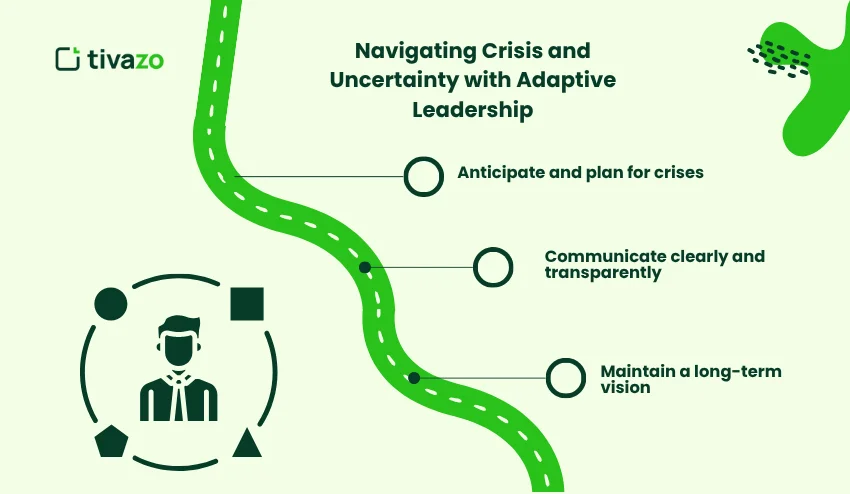
- Anticipate and plan for crisis
- Adaptive leaders are proactive by identifying potential crisis and developing contingency plans. This way, they can act decisively and adapt if necessary promptly.
- Communicate clearly and transparently
- Clear communication is important when dealing with uncertainty and leaders must keep everyone informed about what is going on to create some transparency to the existing challenges and the ways being taken to address those challenges.
- Maintain a long-term vision
- While dealing with the crisis, adaptive leaders seek to keep the team aligned with the long-term vision/goal of the organization. This is to enable the team to remain grounded and motivated to the bigger picture.
H2: Building a Culture of Adaptability in Your Organization
If you want to thrive in an ever-changing business world, adaptive leaders must not only focus on their adaptability: they help create a culture of adaptability where everyone in their organization accepts change. A culture of adaptability can support continuous learning, creativity, and innovation across the organization, enabling the organization to pivot and respond to new challenges. In your teams, here is how to create a culture of adaptability:
- Empower your employees by providing them with the tools and resources they need to innovate
- Encourage experimentation by encouraging and rewarding innovative problem-solving, even if it comes with risk
- Create psychological safety for your employees to feel comfortable taking calculated risks and learning from mistakes
H2: The Practice of Adaptive Leadership in the Hybrid and Remote Workplace
The work is gradually becoming hybrid, with teams operating in physical and virtual spaces. Adaptive leaders are in a strong position to flourish in this workspace, as they have the capability to lead distributed teams. Their ability to connect, communicate, and engage employees regardless of location, will determine their ability to succeed in a context that continues to evolve. Here are some of the ways the practice of adaptive leadership is expressed in a hybrid and remote context:
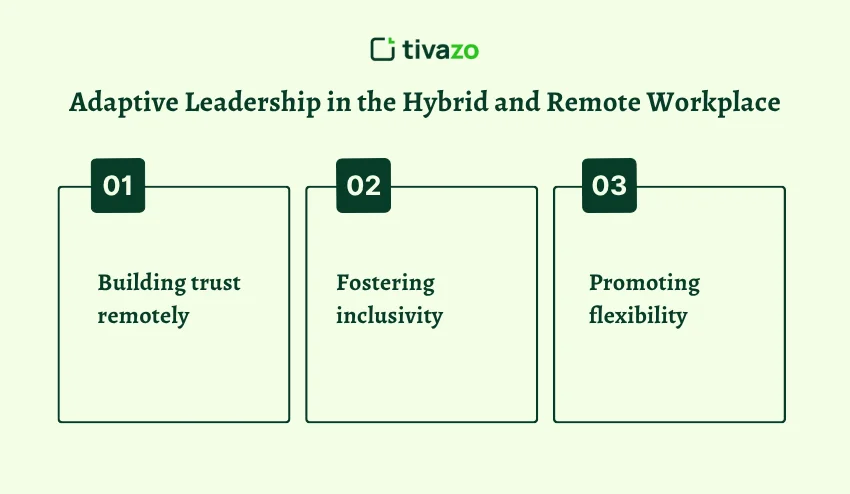
- Building trust remotely
- Adaptive leaders leverage technology to connect and communicate with each other to build and maintain awareness for their teams, and keep them informed and engaged even if they are working in different locations.
- Fostering inclusivity
- They make sure that each member of the team feels valued and secures a platform for multiple, diverse voices and perspectives to be heard and appreciated even in the virtual workspace.
- Promoting flexibility
- Leaders create conditions that allow employees to choose when, and where they work, thereby maximizing productivity while allowing employees to maintain their work-life balance and job satisfaction.
H2: How The Practice of Adaptive Leadership Drives Success in 2026
In 2026, adaptive leadership will be a vital component for many organizations wanting to succeed in a rapidly changing business environment. Adaptive leaders are more than reactive; they take proactive steps to create a culture that drives innovation, supports employee morale, and fosters rapid decision-making. Specifically, the practice of adaptive leadership will contribute to success in the following ways:
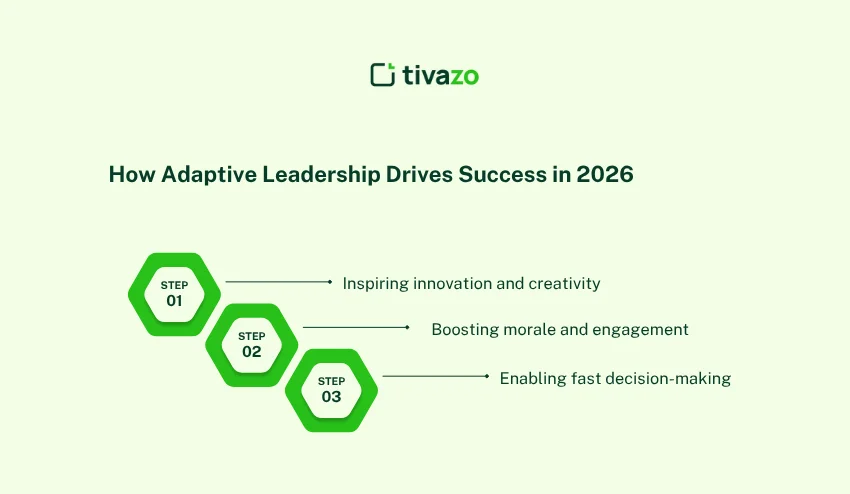
- Inspiring innovation and creativity
- Adaptive leaders are ready to establish a culture of innovation and creativity that promotes experimentation and support for experimentation, leading to ongoing innovations.
- Boosting morale and engagement
- Adaptive leaders prioritize emotional intelligence and collaborative engagement to ensure the team’s motivation and engagement.
- Enabling fast decision-making
- Adaptive leaders are flexible and act with speed to make necessary decisions to allow quick reactions to the changes in the marketplace.
H2: Practical Steps to Become an Adaptive Leader
As we prepare for 2026, an adaptive leadership style will be instrumental to successful leadership in a volatile business environment. Here is how it will contribute to resilience and growth:
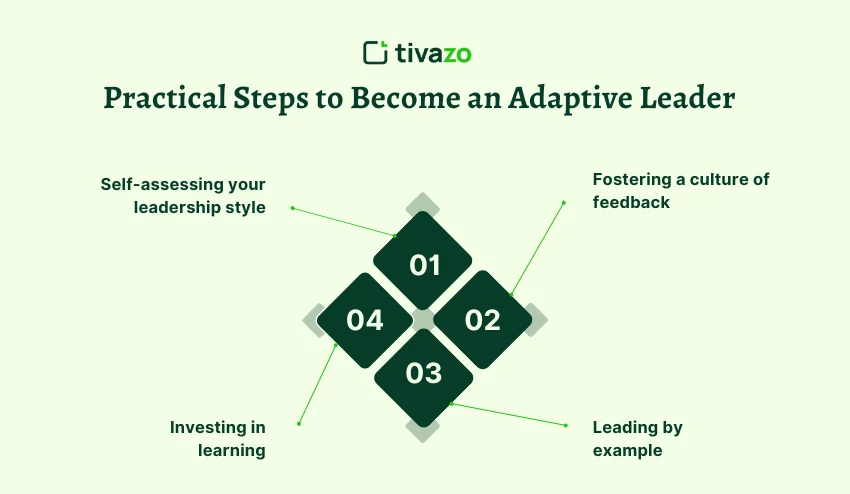
- Self-assessing your leadership style
- The first course of action is to reflect upon your style of leadership. You should take note of how you communicate, your emotional intelligence as a leader, and how you adapt to change. Self-reflection is the first step to growth to become a more adaptive leader.
- Fostering a culture of feedback
- It is important for adaptive leaders to realize that giving and receiving feedback is a two way street to development. By providing a culture in which your team can both give and receive constructive feedback you provide opportunities for your team to grow and develop while you also learn from them. Compared with hard inept passive responses to this process, teams continuously improve and communicate openly.
- Investing in learning
- Continually expanding your learning is essential for an adaptive leadership style. It is important to invest in your leadership development through coursework, degree programs, books, mentorship, etc. It is the accomplice of remaining in a constantly changing business world.
- Leading by example
- The most effective means of leadership must be through example. Exhibit the characteristics of adaptive leadership – namely resilience, flexibility, and emotional intelligence in action, in your interactions during the week. Your behavior models for your group, and influences the culture of your organization.
The Future of Adaptive Leadership
As we consider what the future will look like in 2026, adaptive leadership will play a significant role in dealing with the challenges of an evolving complex business environment. The leaders who will find success in the coming decade will do so based on flexibility, inspiring creativity and innovation, and nurturing a philosophy of adaptive, lifelong learning. Through the stance of emotional intelligence, and collaboration, adaptive leaders will encourage groups to respond quickly to challenges and take advantage of new opportunities, supporting adaptive organizations for success.
H2: Conclusion
Adaptive leadership is not just a buzzword; it’s the blueprint for business success moving forward. Embracing new technologies, establishing resilience, valuing emotional intelligence, promoting collaboration and working in continuous learning settings will prepare your teams for work in 2026 and beyond.
As the business world continues to change, those capable of flexibly and emphatically leading others will realize growth and innovation opportunities. Continuous learning and being open to new ideas not only help you adapt but also help you to create a team that can meet future challenges.
